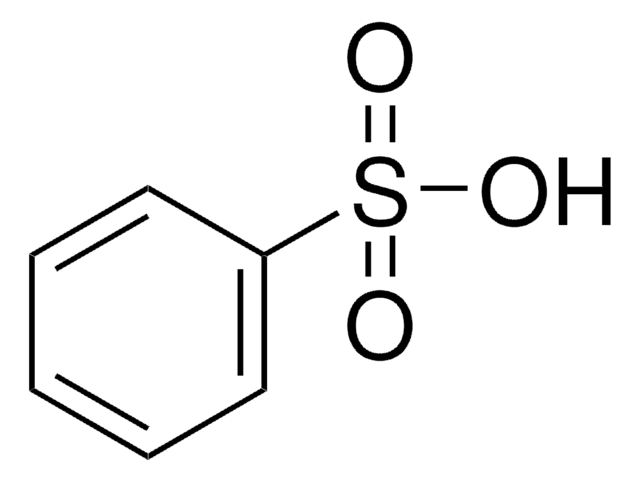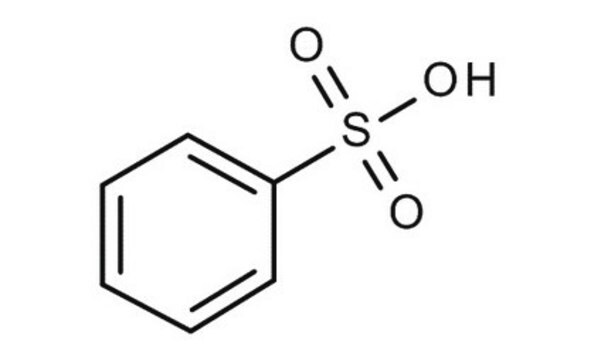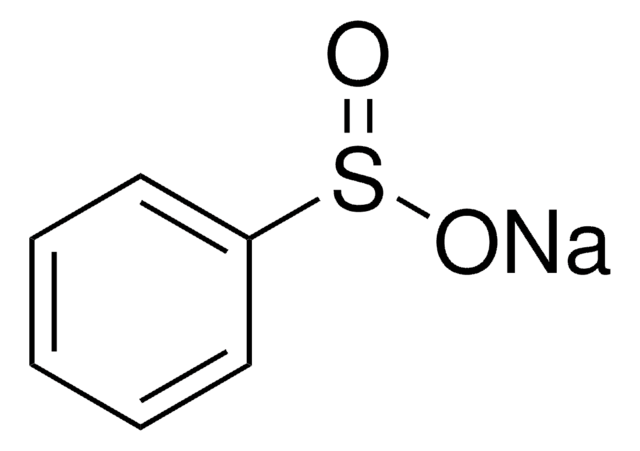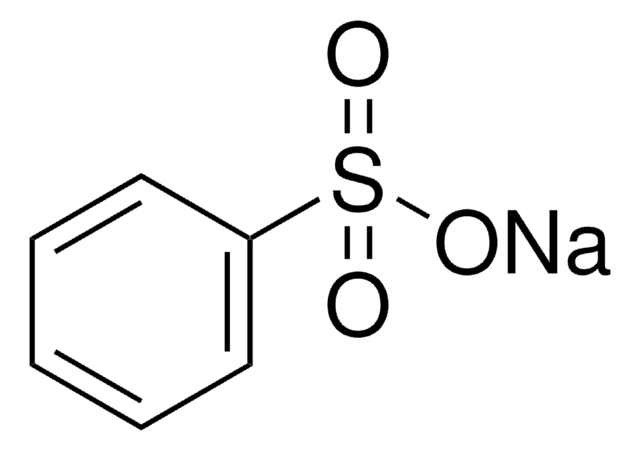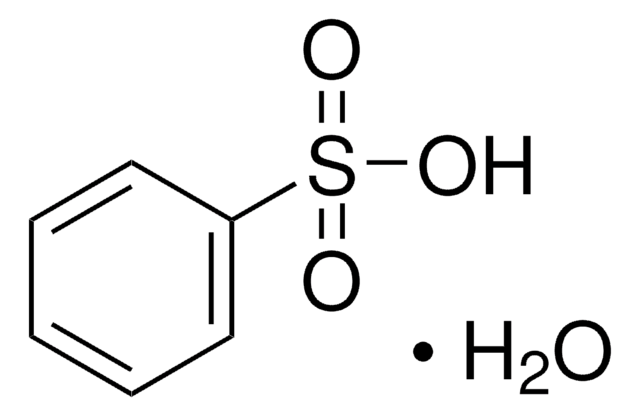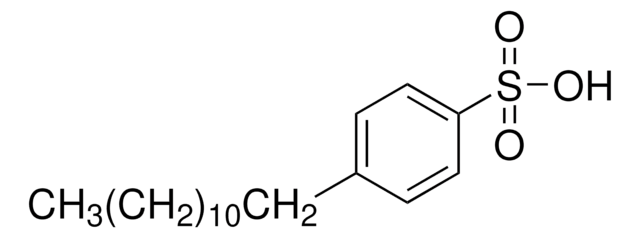추천 제품
일반 설명
Benzenesulfonic acid, also known as besylic acid, is a strong organic acid commonly used as an acid catalyst in various organic reactions, such as esterification, alkylation, and condensation reactions. It is also used as a sulfonating agent to introduce sulfonic acid (SO3H) groups into organic compounds, which can be useful in the synthesis of several dye intermediates.
신호어
Danger
유해 및 위험 성명서
Hazard Classifications
Acute Tox. 4 Oral - Eye Dam. 1 - Met. Corr. 1 - Skin Corr. 1B
Storage Class Code
8A - Combustible corrosive hazardous materials
WGK
WGK 1
Flash Point (°F)
Not applicable
Flash Point (°C)
Not applicable
이미 열람한 고객
Bo Ram Lee et al.
Journal of colloid and interface science, 331(1), 55-59 (2008-12-09)
Sulfur hexafluoride (SF(6)) has been widely used in a variety of industrial processes, but it is one of the most potent greenhouse gases. For this reason, it is necessary to separate or collect it from waste gas streams. One separation
Yanlong Gu et al.
Organic letters, 9(2), 175-178 (2007-01-16)
A neutral catalytic system for Michael reactions of indoles has been developed by combining silica-supported benzenesulfonic acid sodium salt with hydrophobic ionic liquid in water. An efficient hydrophobic environment could be created on the surface of the silica-sodium material under
Rebecca J Dearman et al.
Toxicology in vitro : an international journal published in association with BIBRA, 22(8), 1927-1934 (2008-10-14)
There is considerable interest in the development of in vitro methods for the identification of contact sensitizers, including those that use cultured dendritic cells (DC), key players in cutaneous immune responses. Chemical allergens, such as dinitrobenzene sulfonic acid (DNBS), or
N V V S S Raman et al.
Journal of pharmaceutical and biomedical analysis, 48(1), 227-230 (2008-07-08)
The present paper describes a simple isocratic reverse phase HPLC method for the determination of four genotoxic alkyl benzenesulfonates (ABSs) viz. methyl, ethyl, n-propyl and isopropyl benzenesulfonates (MBS, EBS, NPBS and IPBS) in amlodipine besylate (ADB). Good resolution between benzene
Chenghui Han et al.
Journal of hazardous materials, 168(1), 215-219 (2009-04-04)
A series of TiO(2)-Cu(2)O mixed oxides were prepared by the hydrolysis of titanium butoxide and reduction of copper acetate with hydrazine. These composite oxides were characterized by X-ray diffraction (XRD), inductively coupled plasma spectrometry (ICP), high-resolution transmission electron microscopy (HRTEM)
자사의 과학자팀은 생명 과학, 재료 과학, 화학 합성, 크로마토그래피, 분석 및 기타 많은 영역을 포함한 모든 과학 분야에 경험이 있습니다..
고객지원팀으로 연락바랍니다.